How to plant a rose correctly?
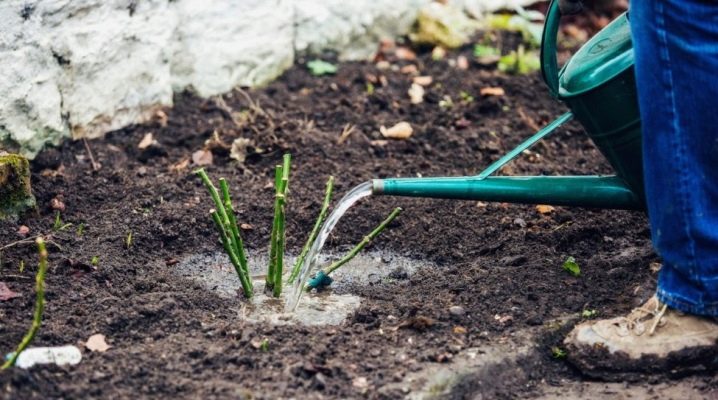
Any summer resident can grow beautiful roses on a plot or in a garden. The whole process begins with planting. It is not particularly difficult, but some points should be taken into account.
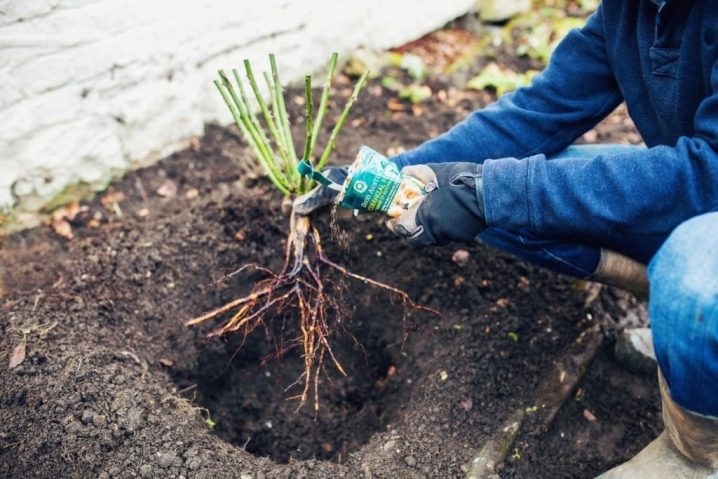
Timing
Roses can be planted at different times. But it is still best to do this in the spring. Flowers planted in spring adapt much better, develop their root system faster. It is this type of planting that is favorable for regions with cool climates. In spring, different types of roses are planted in the suburbs, in Siberia, in the Urals, in the Leningrad region. And in the southern and warm regions it is quite possible to practice.
It is important to take into account the climate of the region. So, in warm zones, this is usually the time from late March to mid-April. In the middle lane, they are planted in April or early May, and in the northern territories at the end of May.
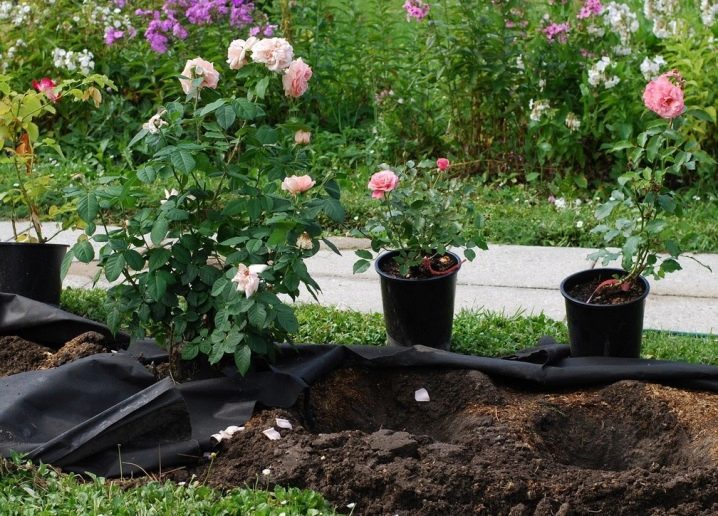
It is very important that the soil temperature at the time of planting is 10-12 degrees Celsius. Return frosts are unacceptable; roses almost always die from them.
It is undesirable to plant roses in summer. The deadline for planting is June, then it will be late. But these rules apply only to seedlings. If the rose before planting in open ground grew in a container, then it can be planted in the soil in the summer. The most important thing here is the transshipment method. That is, the flower is planted from the previous pot directly with an earthen lump, without violating its integrity.
In warm regions, it is permissible to plant roses in the fall. Most gardeners who live in hot places do this, since the rose is easier to survive in a light cool than in the forty-degree summer heat. Disembarkation usually takes place in October or early November. As for the cold areas, summer residents also try to plant roses there in the fall. They will have to do it in September.
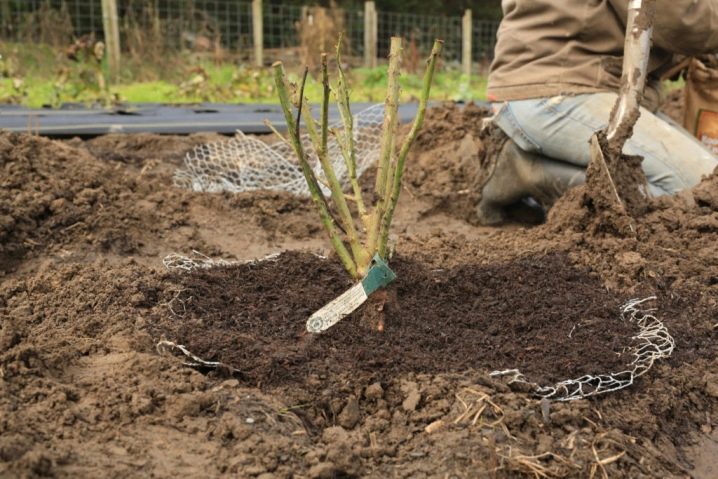
Selection and preparation of a seedling
Having decided on the timing of planting, it's time to choose a good seedling. You can buy it in the nursery. When buying a copy, you need to carefully examine, paying special attention to the roots. The roots must be strong, branched, and free of any defects. The cut should show a white or slightly yellow color. If the roots of the plant are covered with earth, then this lump must be complete. Be sure to smell the ground. The soil cannot give off rot, mold.
It is definitely not worth buying seedlings with dry roots and clear signs of deformation. Rotting, various spots and streaks, the presence of wrinkled bark - all this suggests that the specimen is unsuitable for planting.

Short roots and a small number of fibrous processes are additional unfavorable signs. Gnawed or spotted foliage indicates the "work" of insect pests.
If the seedling has already been purchased, and planting work needs to be postponed, it does not matter. Plants can be successfully preserved. If the wait does not exceed 10 days, then the planting material must be placed under a canopy and covered with a damp burlap. Cellophane is placed on top of the burlap. The tips of the branches should be on the outside. The seedlings must be ventilated every day. The burlap should always be slightly damp. If the wait is delayed, the pink seedlings will have to be dug into the soil.
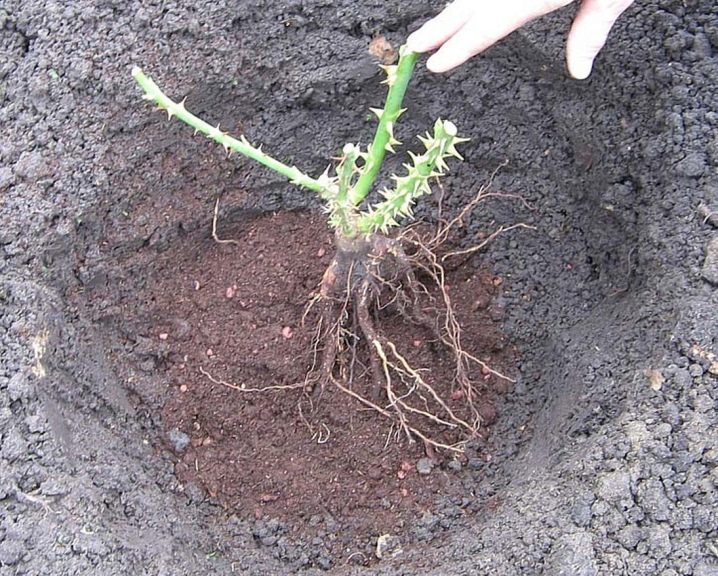
When preparing for planting, the seedling is carefully examined. Dry roots must be trimmed, and too long ones must be shortened to the 0.3 meter mark.
Weak, too dry branches are removed, and the strongest are shortened so that their length is about 35 centimeters. Shoots are cleaned of paraffin, if any.
Then the seedling must be soaked. For soaking, take store growth stimulants (for example, "Zircon") or make solutions at home. Aloe, honey and other stimulants known to gardeners are suitable. The seedling is dipped into the solution to the level of the root collar and kept there for about 3 hours. Then it is kept in a fungicidal solution for a quarter of an hour. The last stage of preparation is to immerse the roots in a clay mash. After that, they need about 60-90 minutes to dry.

Place selection
When planting roses in the country, it is very important to choose the right place. The initial survival rate of the seedling and its further growth will depend on this. Absolutely all varieties of roses are extremely negative about drafts. Due to the cold wind, they begin to shed flowers and lose good immunity. This is very important to consider. In addition, beautiful flowers are unlikely to be grown in an area where groundwater flows near the soil surface. These conditions are optimal for the development of root rot.
Most varieties prefer sunny locations. But only a few can withstand constant exposure to the sun, especially from 12 to 3 pm.
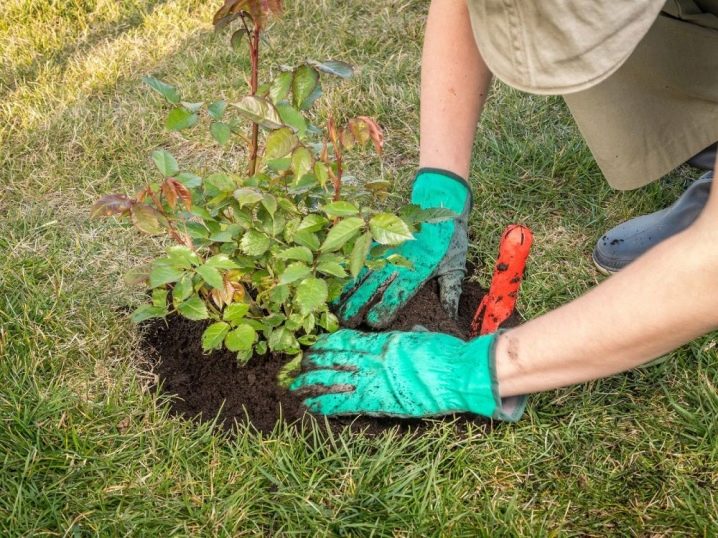
If there is an opportunity to plant bushes where there is partial shade at this time, great. But it is impossible to rush to the other extreme, constantly shading the seedlings. However, there are roses that will only grow in partial shade. These are David Austin grades. These roses are used to the UK climate, where the weather is often cloudy. They cannot withstand the aggression of the sun in summer.
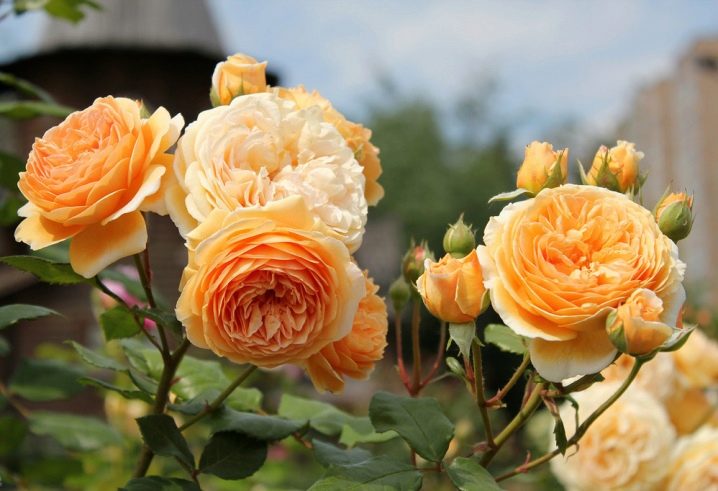
How to prepare the soil?
Roses should not be planted on soils with a high sand content. Such soil quickly loses moisture, useful substances are constantly washed out of it. Heavy substrates will also not work. Fertile land with proper aeration is a good solution. For example, black soil, sandy loam, loam. The acidity should be kept in the range of 5.5-6.5.
It is recommended to prepare the soil for future plantings in the previous season. It is well dug up, fertilized with organic and mineral substances. Then such land will settle and become completely suitable for landing. But not all summer residents are engaged in such advance preparation. Usually the place is prepared in 14 days, this is the deadline.

Double digging is carried out, holes are dug. The standard diameter of the landing hole is 0.6 m, the depth is 0.4 m. But the figures may vary.
So, if the land is infertile or has a too dense structure, you need to increase both the diameter and depth. If the planting is carried out in areas with high groundwater, then the depth is increased by 0.2 meters. This is to accommodate the drain.
Having dug a hole, the earth from it must be set aside. Now you need to prepare the nutritious filling of the well. Humus, turf and peat are taken, all this is mixed in equal proportions. Fresh organic matter for roses is categorically contraindicated. Superphosphate and wood ash should be added to the resulting mixture. They can be added immediately or put into the hole when planting. Then the well is loaded with the made substrate by two thirds and left for 14 days.
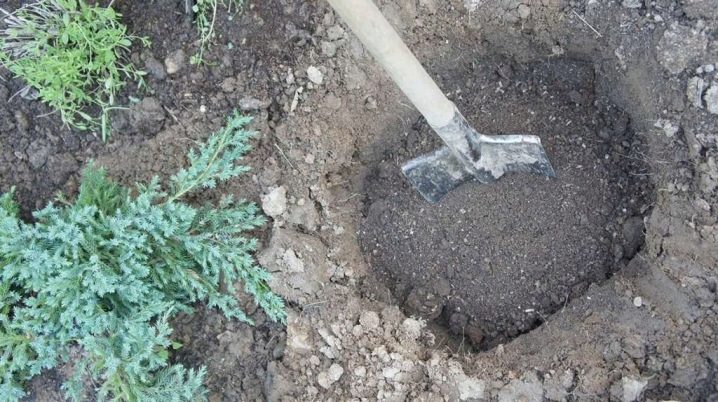
Landing technology
It is not difficult to plant a rose correctly. The algorithm has been developed and tested by thousands of gardeners. Here's how it looks step by step.
-
The planting hole is well watered. When the water is absorbed, it will be necessary to remove about half of the substrate.
-
Then a small hill is made in the central part of the hole. The seedling, ready for planting, is installed on this hill, the roots are well straightened. In this case, the growth point should be at the same level as the edge of the hole.
-
They begin to pour the substrate from the sidesgently tamping it down to avoid air pockets.
-
After planting, the plant is well watered, spending about 10 liters of water. The growth point will go a little into the ground, as it should be.
-
After watering, the soil near the rose bush is covered with mulch.... You can take dried humus or other organic material. The planted rose must be protected from direct sunlight for 10 days.
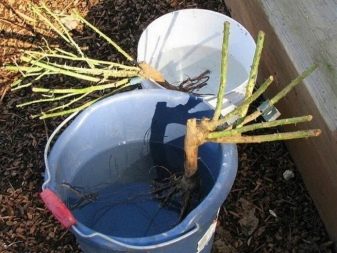
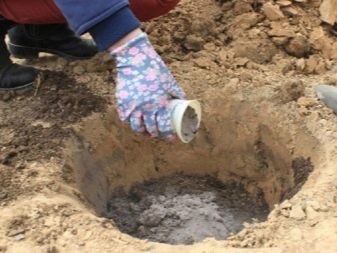
If you are planting a garden rose directly from a container, there are a few rules to keep in mind. The plant is watered a couple of hours before planting, so it will be easier to remove it from the pot. If you still can't pull it out, cut the container.
The rose is planted right with a lump in a hole, covered with a substrate so that it surrounds the bush by 0.1 m on all sides. Then it is watered and mulched.
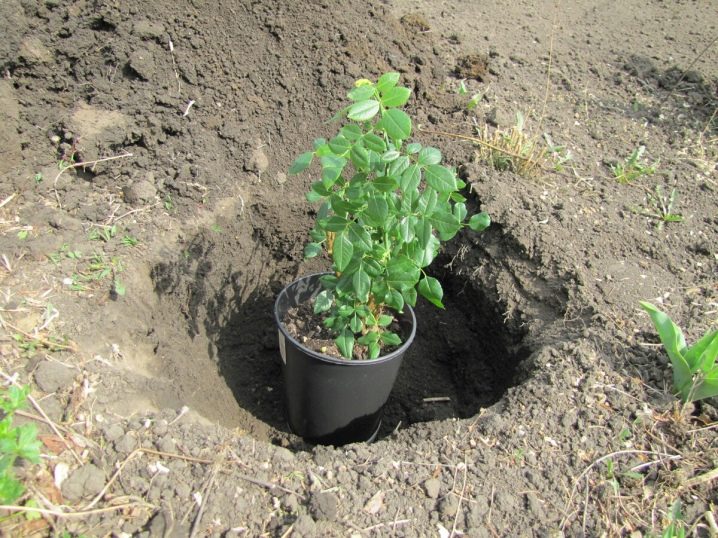
We talked about the general rules for planting rose bushes, now it is worth mentioning some other nuances. There are many varieties of roses, and some of them require special conditions.
-
Ground cover varieties of roses need a small hole, about half the size of the standard one. However, they require perfectly clean soil. It should be free of weeds and their roots, other residues. The distance between the bushes should be from 50 to 150 cm, it all depends on the variety. Different varieties have bushes of different widths.
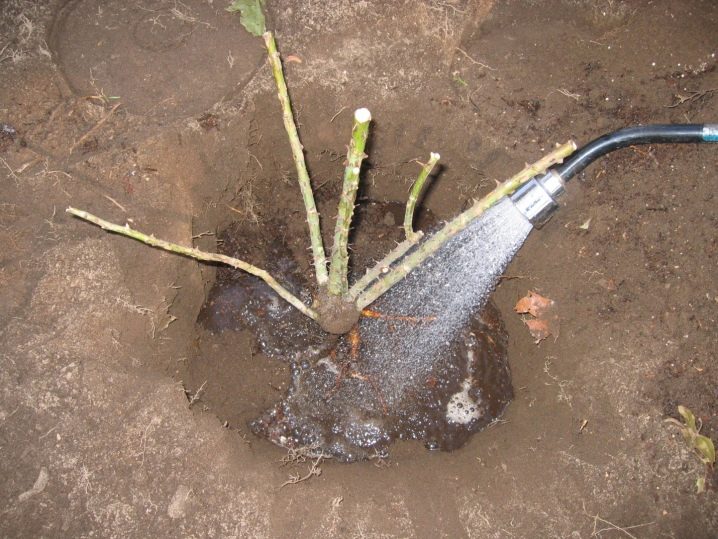
-
Climbing roses, including their Canadian subspecies, must be planted at a distance of one and a half meters. Such plants will definitely need support. It is installed in advance. When planting bushes near a wall or fence, a hole is dug half a meter from the structure. When planting, the root is positioned so that it looks the other way.
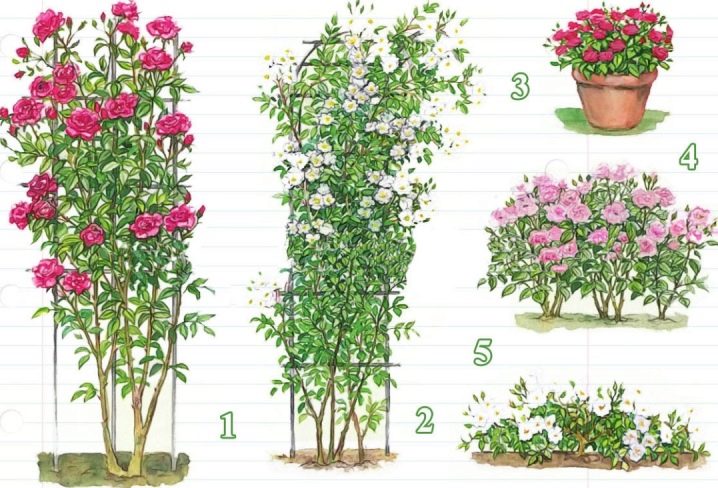
-
Delicate floribunda roses of small varieties can be planted 30 centimeters apart. If the bush is voluminous, then 90 cm. The growth point is deepened by 3-8 centimeters. The same distance is observed for hybrid tea roses, but the deepening of the grafting is done by a maximum of 5 cm.
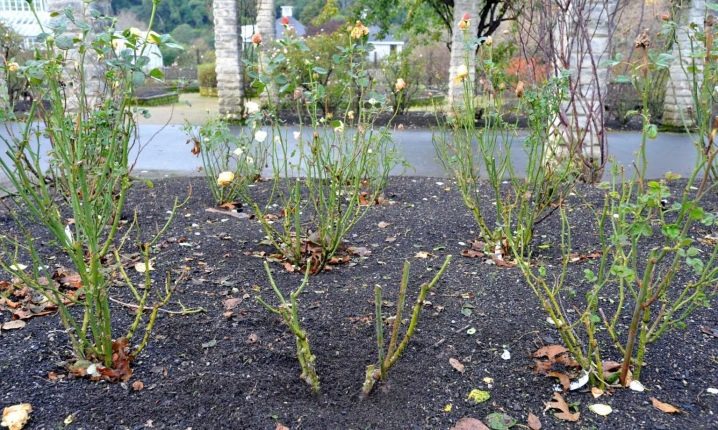
- Standard roses are planted earlier than other varieties. Be sure to put a support, if it is made of wood, treat it with special preparations that prevent rotting. The seedling is placed 5 cm from the peg, the planting depth should be the same as that in the nursery.

- Shrub park roses do not need support. To correctly calculate the distance between the bushes, you should focus on a fully formed plant. The distance will be equal to half of its height.
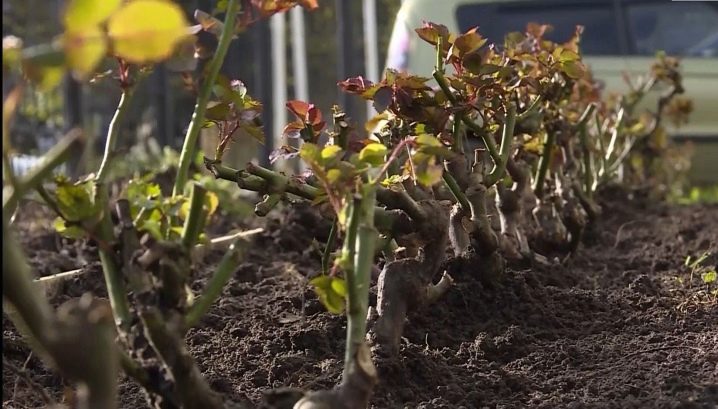

































































































The comment was sent successfully.